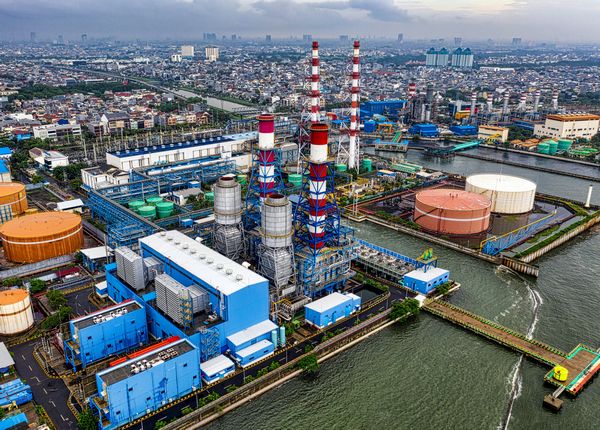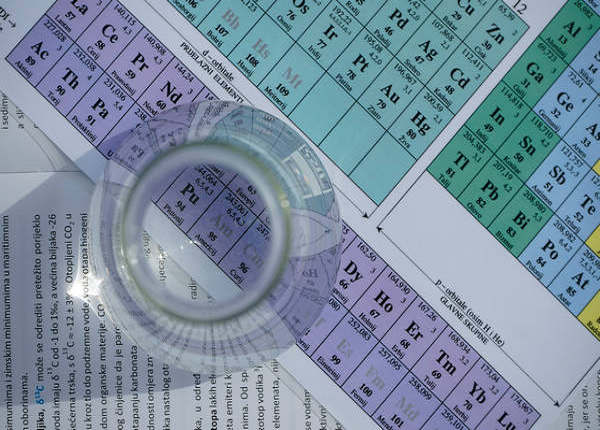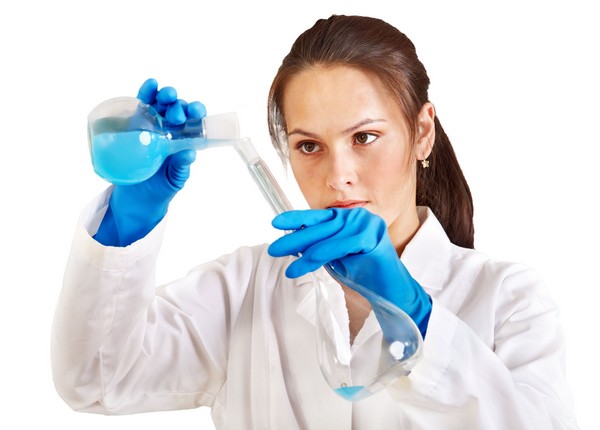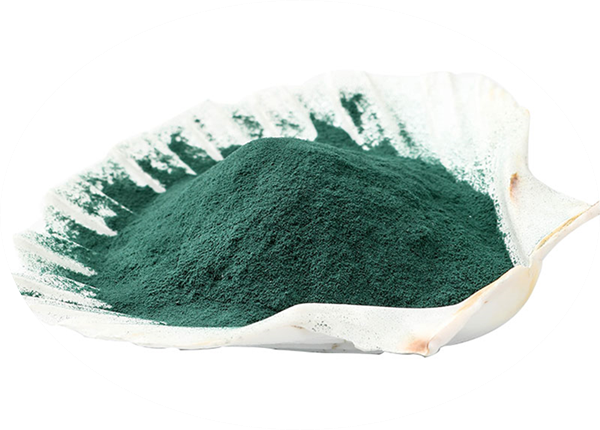
Halogens And Their Compounds
Chlorine
Uses
The first large-scale use of chlorine was in the manufacture of bleaching powder for use in making paper and cotton textiles. Bleaching powder was later replaced by liquid chlorine, which also came into widespread use as a germicide for public water supplies. Presently the principal use of chlorine is in making chemical compounds. Important inorganic chemicals made by direct action of chlorine on other substances include sulfur chloride, thionyl chloride, phosgene, aluminum chloride, iron(III) chloride, titanium(IV) chloride, tin(IV) chloride, and potassium chlorate.
Organic chemicals made directly from chlorine include derivatives of methane (methyl chloride, methylene chloride, chloroform, and carbon tetrachloride); chlorobenzene and ortho- and para-dichlorobenzenes; ethyl chloride; and ethylene chloride.
Commercial preparation
Of several processes that have been used for the manufacture of chlorine, the oldest employed the reaction of hydrochloric acid with manganese dioxide. The procedure was inefficient, and its commercial application was short-lived.
A process introduced about 1868 by the English chemist Henry Deacon was based on the reaction of atmospheric oxygen with hydrochloric acid, which was available as a by-product of the Leblanc process for making soda ash; when the Leblanc process became obsolete, the Deacon process fell into disuse.
The chlor-alkali industry—in which chlorine and caustic soda (sodium hydroxide) are produced simultaneously by electrolytic decomposition of salt (sodium chloride)—has become the principal source of chlorine during the 20th century. As noted earlier, in the two important versions of the electrolytic process, brine is the electrolyte (in which the passage of electric current occurs by the movement of charged particles called ions), and graphite rods are the anodes (positive terminals). The difference between the two processes derives from the distinct behaviour of iron and of mercury when those metals are used as cathodes (negative terminals).
In brine, the two substances susceptible to chemical reduction are positively charged sodium ions and neutral water molecules. At a reversible cathode, reduction of sodium ions requires a higher voltage than does the reduction of water molecules, and application of a voltage high enough to reduce sodium ions would effect reduction of a considerable amount of water but of a very small number of sodium ions. The reaction occurring at the surface of an iron cathode is represented by the following equation:

At a mercury cathode, on the other hand, appreciable reduction of water requires a much higher voltage than that needed at an iron cathode. This so-called overpotential is so great, in fact, that the electrode voltage can be raised to that needed for the reduction of sodium ions without affecting the water molecules.
Passage of a direct electric current through brine is attended by chemical changes at the surfaces where the electrodes come in contact with the electrolyte. At the graphite anode, chloride ions present in the dissolved salt are converted by oxidation to elemental chlorine, which is led away through a vent. At the iron cathode, reduction of water takes place, according to the equation shown above. The hydrogen gas is removed, while the hydroxide ions remain in the solution. The net result is that chloride ions and water are consumed and chlorine gas, hydrogen gas, and hydroxide ions are produced. Complete conversion of chloride to hydroxide is not practical, but as brine is continuously introduced at the top of the cell, a solution containing nearly equal amounts of salt and caustic soda is withdrawn at the bottom. Purification of the effluent liquor yields solid sodium hydroxide containing only a small amount of salt.
Successful production of chlorine and caustic soda in these cells requires that the two products be separated, because upon mixing they would react with one another. The chlorine is kept away from the caustic by interposing a diaphragm between the electrodes: such cells are commonly called diaphragm cells.
In the other main variant of the chlor-alkali process, the so-called mercury cell is employed. The cathode in such a cell is a shallow layer of mercury flowing across the bottom of the vessel; graphite anodes extend down into the brine electrolyte. A powerful direct current is caused to pass between the graphite rods and the mercury surface. At the anodes, chloride ions are converted to chlorine gas, as in the diaphragm cell; the reaction occurring at the mercury cathode, however, differs from that at an iron cathode. Positively charged sodium ions in the brine migrate to the mercury surface, where the voltage is high enough to reduce them to sodium metal without reducing the water because of the above-noted overpotential of mercury. The metallic sodium formed at the cathode dissolves in the mercury, and the solution (called an amalgam) flows out of the cell into another vessel, where it is brought into contact with water, which reacts with the sodium to form sodium hydroxide and hydrogen.
The overall result of operating a mercury cell is the same as that of operating a diaphragm cell: sodium chloride and water are changed into sodium hydroxide, chlorine, and hydrogen. Use of the mercury cell, however, makes it possible to generate the sodium hydroxide in the absence of salt, so that evaporation of the caustic liquor produces solid sodium hydroxide completely free of sodium chloride. The higher purity of the product makes it more desirable for certain applications, notably in the manufacture of rayon.
Fluorine
Aluminum refining
The fluorine industry is intimately related to the production of aluminum. Alumina (aluminum oxide, Al2O3) can be reduced to metallic aluminum by electrolysis when fused with a flux consisting of sodium fluoroaluminate (Na3AlF6), usually called cryolite. After starting the process, the cryolite is not used up in massive quantities, but a small supply is needed to make up for inevitable losses. Cryolite is a rare mineral, however, found in commercial quantities only in Greenland. The supply is limited, and it has other uses in glass, in enamels, and as a filler for resin-bonded grinding wheels.
The supply problem was solved by the development of synthetic cryolite. For this synthetic, however, a source of fluorine was needed. Fluorine is actually somewhat more abundant in the Earth’s crust than chlorine, but most of it is distributed in various rocks in very small quantities. In a form available to the industrial chemist, it is much scarcer than chlorine. Until the 1960s almost the only source was fluorspar (CaF2), a mineral long known and used as a flux in various metallurgical operations. It is still so used, in quantities larger than before, because the processes that are coming into greatest use for making steel, the basic oxygen process and the electric furnace, use two to three times as much flux as the earlier open-hearth furnaces did. The mineral fluorspar is widely distributed, but the supplies of good quality ore are not large; it has been found necessary to utilize lower grade ores, making the processing more expensive. A very large reserve that can be tapped for fluorine is the 3 percent or so that is present in some phosphate rock. In the past this fluorine content was seldom recovered; the future will undoubtedly see a major reversal.
Refrigerants
These inorganic uses, as a flux and in the manufacture of aluminum, formerly constituted almost the whole of the fluorine industry. The organic fluorine industry, a separate branch, began in the late 1920s with the discovery by Thomas Midgley, Jr., of the United States, of the fluorine-containing refrigerants. A new refrigerant was needed for the domestic refrigerators that were just beginning to be produced on a large scale. Ammonia was unsuitable because even a minute leak would give an unpleasant smell, and breakdown would release poisonous quantities of the gas. Although many fluorine compounds were known to be poisonous, Midgley found some that were remarkably nontoxic. They also had the physical properties required for a refrigerant and were totally odourless.
The most used of these is Freon 12 (CCl2F2), dichlorodifluoromethane; also used is Freon 22 (CHClF2), chlorodifluoromethane. Several analogous compounds containing carbon, fluorine, chlorine, and sometimes hydrogen are available.
Isotope separation
The next advance in the fluorine industry was connected with the development of the atomic bomb during World War II. It was necessary to separate the small proportion of the fissionable isotope uranium-235 from other, nonfissionable uranium isotopes. This separation could be done by diffusion, working with uranium hexafluoride, a gas. Fluorine at that time was made only occasionally on a small laboratory scale, and it had a reputation for intense chemical reactivity and for being difficult to handle. The solution to the problem of large-scale preparation of elemental fluorine, which required the development and introduction of novel, fluorine-resistant materials of construction, made this important element generally available. Fluorine manufacture is now routine. Other uses have been developed: as a component in some rocket propellants, for the preparation of the extremely reactive interhalogen compounds such as chlorine trifluoride (ClF3), used for cutting steel, and for the preparation of sulfur hexafluoride, an extremely stable gas that has been employed as an insulator in electrical applications.
Other uses
Nonstick frying pans have been coated with a fluorocarbon resin, the best known of which is polytetrafluoroethylene. There are several other fluorocarbon and fluorinated hydrocarbon resins; some have highly specialized applications in the aerospace industry.
Fluorinated compounds are also used in textile treatments; some are soil-release agents that make fabric easy to wash. The salt sodium fluoroacetate is an extremely powerful rodenticide; it has been reported to give good control of rats, but it must be used with great care. Sodium bifluoride is used as a laundry sour; it also removes iron stains without weakening the fabric.
A minor but important use of fluorine in some countries is in the fluoridation of drinking water in the interest of dental health.
Bromine
The properties of bromine are significantly different from those of fluorine and chlorine, and it is far less abundant. Discovered in the early 19th century, in the form of its salts (bromides) in the bitterns remaining after evaporating seawater and extracting the sodium chloride, it was obtained later from Stassfurt, Germany, as a by-product in the production of potassium salts and from other salt deposits and salt lakes. Its main use was originally for bromides in medicine, still a minor use. Bromine first became of industrial importance with the development of the modern photographic process, in which the light-sensitive material is an emulsion of minute particles of silver bromide (together with silver chloride, or iodide, or both) in gelatin.
Tetraethyllead was another of Thomas Midgley’s discoveries in the 1920s. Long the only effective agent in preventing “knock” in gasoline engines, tetraethyllead is now supplemented by tetramethyl lead, a similar compound. Although the knock problem was solved, a method was needed to get all traces of lead out of the engine cylinder. This removal was achieved by the addition of small quantities of a scavenger, ethylene dibromide, often in a mixture with ethylene dichloride.
For a time the expanding world automobile industry threatened a scarcity of bromine, obtained from brines from the Great Lakes region and Searles Lake in the United States, and from the Dead Sea, which contains about 0.5 percent bromine. To meet the demand it was necessary to turn to seawater, which contains about 70 parts per million bromine.
To produce bromine from seawater, very large volumes of water must be processed. A preferable site for the operation is a neck of land projecting into the ocean so that water can be taken from one side and discharged to the other, avoiding the problem of processing the same water. The water is made acid with a little sulfuric acid and then treated with chlorine, which releases bromine from the bromides.
A current of air removes the bromine as a very dilute mixture of bromine with air. The bromine is absorbed in sodium carbonate, after which treatment with sulfuric acid releases the bromine again in a much more concentrated form.
By far the greater part of the bromine produced is converted to ethylene dibromide by treatment with ethylene. Most of the ethylene dibromide is used in gasoline as a scavenger for lead; but it is also used as a fumigant, as a solvent for certain gums, and for further syntheses. The next most important bromine compound is methyl bromide, which is used as a fumigant, sometimes as a fire extinguisher, and for further syntheses.
Iodine
Iodine enters the chemical industry on a smaller scale. The largest producer is Japan, where iodine is obtained from seaweed. Seawater contains only about 0.05 part per million iodine, but some species of seaweed are able to concentrate this iodine manyfold, so that commercial extraction of the iodine is possible.
The most important industrial use of iodine compounds is the small amount of silver iodide used with silver bromide in photography. Iodine is important also in medicine (although this is not a large-scale use) in the treatment of certain thyroid conditions, and it is added to common table salt to prevent such conditions. It is also used directly as a disinfectant. Iodine is a component of a few useful dyes. The laboratory chemist frequently makes use of iodine or iodine compounds in synthesis and also in analysis. Crystalline silver iodide is useful in cloud seeding.
Organic Chemicals
The heavy chemical industry, in its classical form, was based on inorganic chemistry, concerned with all the elements except carbon and their compounds, but including, as has been seen, the carbonates. Similarly the light chemical industry uses organic chemistry, concerned with certain compounds of carbon such as the hydrocarbons, combinations of hydrogen and carbon. In the late 1960s the phrase heavy organic chemicals came into use for such compounds as benzene, phenol, ethylene, and vinyl chloride. Benzene and phenol are related chemically, and they are also related to toluene and the xylenes, which can be considered together as part of the aromatic group of organic chemicals, the aromatic compounds being most easily defined as those with chemical properties like those of benzene.
Benzene
Chemically, the hydrocarbon benzene, which forms the basis of the aromatics, is a closed, six-sided ring structure of carbon atoms with a hydrogen atom at each corner of the hexagonal structure. Thus a benzene atom is made up of six carbon (C) atoms and six hydrogen (H) atoms and has the chemical formula C6H6. Benzene has long been an industrial chemical. Initially it was obtained from the carbonization (heating) of coal, which produces coke, combustible gas, and a number of by-products, including benzene. Carbonization of coal to produce illuminating gas dates back in England to the very early years of the 19th century. The process is still employed in some countries, but more use is being made of natural gas. The carbonizing process is also used (with slight modifications) to produce metallurgical coke, indispensable for the manufacture of iron and hence steel. The supply of benzene from the carbonizing process, however, is not sufficient to meet the demand. For every ton of coal carbonized only about two to three pounds (0.9 to 1.35 kilograms) of benzene are obtained.
The shortage of aromatics first became evident during World War I, when toluene was in great demand for the manufacture of trinitrotoluene, or TNT, the principal explosive used then. Methods were worked out to obtain toluene from petroleum. Much later, after World War II, benzene and all the other aromatics derived from it were needed in far greater quantities than metallurgical coke could supply, and by far the greater part of these aromatics now comes from petroleum.
Toluene
Toluene differs from benzene in that one of the hydrogen atoms is replaced by a special combination of carbon and hydrogen called a methyl group (―CH3). The xylenes have two methyl groups in different positions in the benzene ring, and thus all aromatics are to some extent interchangeable. In fact, one of the uses for toluene is to produce benzene by removing the methyl group.
All of these hydrocarbons are useful as gasoline additives because of their antiknock properties.
Toluene is also used as a solvent. The expression “as a solvent,” which occurs frequently in describing the uses for chemicals, covers a multitude of applications. The substance dissolved is usually also organic, and the process is used in coatings, adhesives, textiles, pharmaceuticals, inks, photographic film, and metal degreasing. An application that reaches the ultimate consumer is dry cleaning (although the solvent used here is not toluene, but other hydrocarbons or chlorohydrocarbons). Toluene has a multitude of other uses, such as in the polyurethane plastics and elastomers discussed below.
Xylene
The three isomeric xylenes (isomeric means that they have exactly the same number and kind of atoms but are arranged differently) occur together, and with them is another isomer, ethylbenzene, which has one ethyl group (―C2H5) replacing one of the hydrogen atoms of benzene. These isomers can be separated only with difficulty, but numerous separation methods have been worked out. The small letters o-, m-, and p- (standing for ortho-, meta-, and para-) preceding the name xylene are used to identify the three different isomers that vary in the ways the two methyl groups displace the hydrogen atoms of benzene. Ortho-xylene is used mostly to produce phthalic anhydride, an important intermediate that leads principally to various coatings and plastics. The least valued of the isomers is meta-xylene, but it has uses in the manufacture of coatings and plastics. Para-xylene leads to polyesters, which reach the ultimate consumer as polyester fibres under various trademarked names.
Benzene itself is perhaps the industrial chemical with the most varied uses of all. Figure 2 shows some in outline form; for example, several routes are shown to phenol, itself an important industrial chemical. In transforming benzene to the products obtained from it, other raw materials are required; for example, ethylene for the production of styrene, and sulfuric acid for the production of benzenesulfonic acid. It would have unduly complicated Figure 2 to attempt to show all of these; chlorine, however, has been shown entering at several places. Chlorine will be encountered in many operations discussed below.
The diagram of Figure 2 is drastically simplified. Many applications of benzene are not shown. In some cases, alternative starting points to the end product sidetrack benzene. For example, to obtain styrene from benzene the route passes through ethylbenzene; but ethylbenzene is found in a mixture with its isomers, the xylenes; the ethylbenzene that is separated from the xylene mixture can be used in the manufacture of styrene.
Figure 2 shows synthetic fibres (two kinds of nylon); coatings, plastics, and elastomers (synthetic products having rubberlike properties) are also mentioned. All these groups of substances have one thing in common—they are all polymers (substances composed of large molecules formed from smaller ones), produced by applications of a rapidly growing branch of chemistry, polymer chemistry, established in the early 1930s. The industrial processes and commercial products based upon polymers are covered in industrial polymers.
Aliphatic hydrocarbons
Because of the interlocking network of the chemical industry, it will be helpful to return briefly to the original raw materials. Earlier the aromatic group of organic chemicals was described; contrasted with these are the aliphatics, of which a number of quite simple chemicals are of industrial importance.
The simplest organic chemicals are the saturated hydrocarbons methane (CH4), ethane (C2H6 or H3C―CH3), propane (H3C―CH2―CH3), and others. These are useful as fuels but are chemically rather unreactive, and so in order to process them to give further chemicals, they are “cracked” by a heat treatment to convert them to unsaturated hydrocarbons. These contain less hydrogen than the saturated hydrocarbons, and they contain one or more double valence bonds, or triple valence bonds, connecting carbon atoms. Some of the most important unsaturated hydrocarbons industrially are acetylene (HC≡CH), ethylene (H2C=CH2), propylene (H3C―CH=CH2), and butadiene (H2C=CH―CH=CH2). An idea of the raw materials for these hydrocarbons and a highly simplified diagram of their products are given in Figure 3.
Ethylene
Ethylene, one of the largest volume organic chemicals, can be produced either together with acetylene or with propylene. It gives rise to a large number of products, many in large volume. Some of the more important have been lumped together in a box (Figure 3): acetaldehyde, acrylonitrile, acetic acid, acetic anhydride, the list bringing together substances that have complex interrelations. These relations would come to light if this box were magnified and examined closely. These substances, however, can in general also be made from acetylene, and acetylene can also be made from a completely different source, calcium carbide.
Acetylene
The raw materials for calcium carbide are shown in Figure 3 as lime, coke, and electric power. Thus calcium carbide is a more suitable source of acetylene in a country that has hydroelectric power but lacks petroleum reserves. The largest producer of acetylene is Japan; Poland, the Soviet Union, and many other countries are also notable producers.
Calcium carbide generates acetylene when acted upon by water. This process can be a small-scale one to give acetylene suitable for illumination because of its extremely bright flame. Acetylene is also made on a large scale for chemical conversion, as shown in Figure 3. Acetylene is also used for oxyacetylene welding because when burned with oxygen it produces an extremely high temperature.
Acetylene and ethylene have been in competition for chemical industrial uses. In the 1950s acetylene was widely used as a chemical raw material, and methods were worked out for obtaining it from hydrocarbon sources, as shown in Figure 3. Later ethylene became in general more economical, and the use of acetylene as a raw material has been declining. Calcium carbide, a raw material for acetylene, however, has other uses. When treated with nitrogen, it gives calcium cyanamide, valuable as a fertilizer and weed killer, and at the same time a raw material for the production of melamine, used in making some modern plastics (see on the left in Figure 3). Other products from acetylene, ethylene, and other unsaturated hydrocarbons marked, in their main outlines, in Figure 3 show that these processes provide a wide variety of raw materials for various plastic, elastic, and fibrous products.
Propylene
Propylene is not produced in as large volume as ethylene and is mostly used chemically. It is an important raw material for certain detergents. It leads to derivatives that are used in antiknock gasoline additives. It can also be polymerized to a product with uses generally similar to those of polyethylene. When made into a fibre, polypropylene is especially useful for carpets.
Elastomers
Butadiene (Figure 3) is used to produce plastics and elastomers, a group of substances related to plastics. The elastomers were at first thought of as synthetic substitutes for natural rubber. As has often happened with synthetic substitutes, however, a number of different varieties were developed; some were actually better than natural rubber in some ways and others better in other ways, and so it was soon realized that what was being developed was not so much a replacement as a supplement.
Interest in a synthetic material that could be used in automobile tires began in Germany as early as World War I, when supplies from the tropical, rubber-producing countries were cut off. A synthetic rubber of a sort was produced that could be used for tires, although the vehicle had to be jacked up when not in motion to prevent developing a flat spot on the tires. Much research in Germany and the United States led to the development, shortly before World War II, of several elastomers. The most important of these, and by far the best for tires, was made of a copolymer of 75 parts of butadiene and 25 parts of styrene. This synthetic was first known as GR-S (Government Rubber–Styrene) but later came to be called SBR—styrene-butadiene rubber. It is produced in far greater quantity than any of the other synthetics. It is better than natural rubber in some respects, but poorer in others. It is often used in blends with other rubbers.
Figure 3 also shows that acrylonitrile can be copolymerized with butadiene (roughly one-third acrylonitrile, two-thirds butadiene) to form nitrile rubber (NBR). This synthetic has different properties from other synthetics and is used for rubber hose, tank lining, conveyor belts, gaskets, and wire insulation. Acrylonitrile and styrene, together with butadiene, form a terpolymer, called ABS, which is useful for high-impact-strength plastics.
Acrylonitrile contains nitrogen, and therefore is decidedly different in chemical constitution from natural rubber, which contains only carbon and hydrogen. Natural rubber has a repeating unit of five carbon atoms. By starting with the unsaturated hydrocarbon isoprene (C5H8), a polymer can be made with the spatial arrangement of the atoms the same as in natural rubber and with very similar properties. This polymer is sometimes referred to as synthetic natural rubber. Another hydrocarbon elastomer starts with isobutylene (C4H8) and gives butyl, a rubber characterized by resistance to oxygen and impermeability to gases, which is used widely in cable insulation and as a coating for fabrics.
Figure 3 shows that acetylene is the raw material for chloroprene (C4H5Cl), which is converted into neoprene, another versatile elastomer of exceptional properties. There are also rubberlike products containing sulfur, known in the United States as the thiokols. A related group, containing carbon, sulfur, and oxygen, the sulfones, are tough plastic materials. Elastomeric materials are more fully treated in the article elastomer (natural and synthetic rubber).
Film materials
Most of the above-mentioned groups of chemicals that can be used either as plastics or elastomers can also be made into the form of coherent films. In the more highly industrialized countries there is a very high demand for films for wrapping purposes, largely for food, and also in the building construction industry. The requirements for a film vary greatly. For many food products the wrapping film must have the ability to “breathe”; that is, it must have some permeability to water vapour and also to oxygen. Films can be developed with high permeability or with none at all. In some applications the film should be self-sealing. Films can be made of any thickness, and for some purposes extreme toughness is required. Paper, or treated paper, has of course been used for many of these purposes for many years, but it has such disadvantages as low strength, particularly when wet, and it is difficult to make it transparent. Cellophane was produced commercially starting in the 1920s; its transparency attracted attention at once, beginning a revolution in wrapping materials.
Cellophane is regenerated cellulose. It is like viscose rayon, except that it is extruded flat, instead of in the form of a fibre. It is still very popular but is highly sensitive to water and to changing humidity. Many other polymers now supplement it and compete with it. Polyethylene makes fine, tough films; there is no sharp distinction between a thin extrusion, useful for a wrapping film, and thicker products used for nonbreakable bottles. Many vinyl products are used in films, as are polystyrene, polyesters, and nylon. A chemical derivative from natural rubber, chlorinated rubber, gives films of extraordinary stretchability.
From coherent films that can stand by themselves, it is a short step to one of the components of a paint. In the days before chemical technology, commercial paints were based on linseed oil as a film-former. Linseed oil and the pigment made a mixture that was too thick, so that it was normally thinned with turpentine.
The thinner in paint is the component that has undergone least change. Turpentine, obtained from pine trees, and sometimes as a by-product in the manufacture of paper, is still used. A petroleum distillate, however, is equally effective. The thinner completely evaporates very shortly after the paint is applied. In latex paints, the paint itself is in the form of minute droplets in water, and water is the thinner.
Carbon black
The outstanding black pigment is the versatile product known as carbon black. Carbon black is one of the most important industrial chemical products. Carbon black is considered a petrochemical because it is made from natural gas or petroleum residues. There are several processes involving either incomplete combustion (burning off the hydrogen of a hydrocarbon, such as methane, and leaving the carbon) or by externally applied heat in a furnace, splitting the hydrocarbon into hydrogen and carbon.
The most important of all the uses of carbon black is in compounding rubber to be used in tires. An average tire of a passenger automobile contains about four pounds of carbon black. Carbon black is not only used as a pigment but also is employed in printing ink, an ink being little different from an applied coating. Carbon black creates the principal difficulty in recycling newsprint because no practical way has been found to destroy the black ink. A specialized use of carbon black is as an additive to phonograph records. A special form of carbon black, derived from acetylene, has its principal use in electrochemical dry cells.
Alcohols and their derivatives
Methanol
The important product methanol (Figure 1) is obtained from synthesis gas in the form of carbon monoxide and hydrogen (sometimes carbon dioxide and hydrogen). The terms methyl alcohol and methanol are synonymous, the former being used more in Great Britain and the latter expression universal in United States industry. The term wood alcohol, sometimes employed, refers to the fact that this alcohol was formerly obtained by the distillation of wood.
Methanol is a large-volume chemical; about half of the production goes to making formaldehyde (CH2O), a very reactive chemical with a large number of uses. A small amount of formaldehyde comes from non-methanol sources, via the direct oxidation of hydrocarbons. Methanol also enters into the production of various plastics; leads to such useful derivatives as methyl chloride, a solvent for inks and dyes; and is used in the purification of steroidal and hormonal medicines.
Formaldehyde
The greatest uses of formaldehyde are in the formation of important groups of plastics, the urea-formaldehyde resins and the phenol-formaldehyde resins. In addition, it is used as a fungicide and as a preservative, in paper and textile treatments, and in the synthesis of further products.
Ethanol and its products
Methanol (CH3OH) is the simplest of the alcohols. The next number of the series, called either ethanol or ethyl alcohol (CH3CH2OH), has two carbon atoms. It is most familiar as the active constituent of fermented beverages, but it is also widely used in industry. When intended for human consumption ethyl alcohol is always produced by fermentation of some suitable material to form beer, wine, or distilled spirits of various kinds. For industrial use it is sometimes produced by fermentation from some cheap material, such as molasses, but more often it is made from ethylene by causing it to combine with water under the influence of a catalyst, which may be sulfuric acid or phosphoric acid.
A major industrial use of ethanol is to convert it by oxidation into acetaldehyde (CH3CHO). Ethanol could have been shown in Figure 3 between ethylene and the block containing acetaldehyde and several related chemicals. Ethanol is also used in the preparation of various derivatives, such as ethyl chloride (used in the production of tetraethyllead), in the course of making various plastics, and in the usual further syntheses.
Acetaldehyde made from ethanol is generally used in the next step by the same company, most often in the same plant, so that the ethanol is really an intermediate that is used at once. For other uses ethanol is often shipped from one plant to another. Alcohol intended for human consumption, however, is in all countries subject to a tax, which would make the cost of ethanol prohibitive for any industrial use. Industrial alcohol, therefore, is denatured by the addition of small amounts of substances that are carefully chosen to be highly unpleasant in taste and hard to remove but that do not interfere with the intended industrial use.
Other alcohols
In the alcohols with three carbon atoms, there are two possible structures, or isomers. One is called n-propyl alcohol (or 1-propanol), the other isopropyl alcohol (or 2-propanol).
The alcohol 1-propanol, not manufactured in very large quantities, finds major use in printing inks. The alcohol 2-propanol, on the other hand, is manufactured on the million-ton scale. It is made from propylene by a process similar to that used to convert ethylene to ethanol, and manufacture of 2-propanol by this process initiated the petrochemical industry in the 1920s.
The principal use of 2-propanol is in the manufacture of acetone, which is used extensively as a solvent and as a starting material in the manufacture of numerous other organic compounds. Smaller amounts of 2-propanol are converted to other chemical products or used as a solvent, as rubbing alcohol, or as a denaturing agent for ethyl alcohol.
Higher alcohols—that is, with more than three carbon atoms—too numerous to detail here, are also manufactured. Mention should also be made of the dihydric alcohol, ethylene glycol. This chemical is produced in large volume and is made from ethylene by an indirect route. Its principal use is in antifreeze mixtures for automobile radiators. It is also used in brake fluids and has numerous derivatives used in resins, paints, and explosives and in the manufacture of polyester fibres. Similar reactions for propylene give propylene glycol, the principal use of which is as a moistening agent in foods and tobacco.









